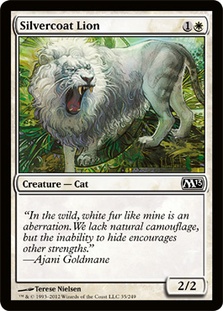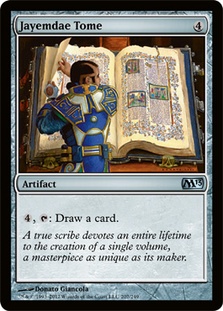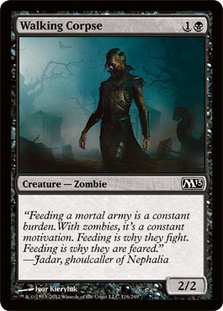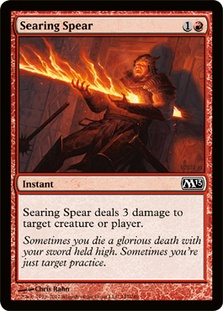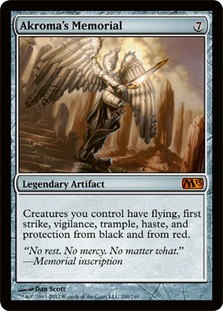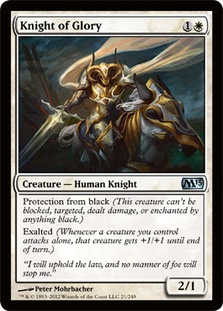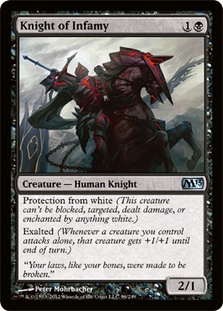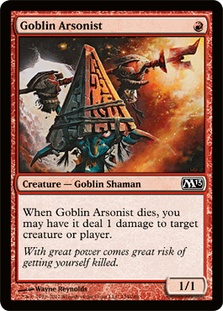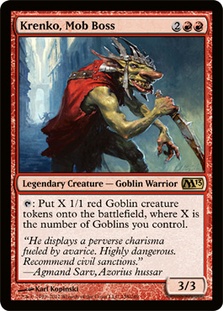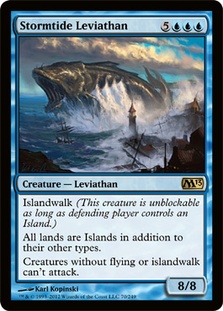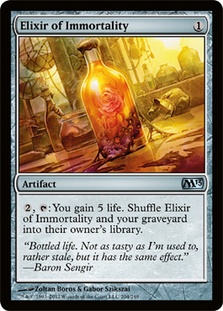Today’s tale starts with disappointment and frustration but ends in satisfaction.
The two weeks leading up to Grand Prix Boston were wrought with losses and results that were pretty tough to swallow. At Grand Prix Columbus, after defeating David Ochoa in a feature match that we both assumed was a ‘win-and-in,’ I found myself in 9th place and on the outside of Top 8 looking in by less than a percentage point. The following weekend, the Vintage Championship was the perfect crucible of poor decisions and bad fortune that culminated in a 0-4 performance in that event.
Needless to say, I was eager to get back in the saddle.
Text to Michael Jacob: “Do you want to go to GP Boston?”
I had caught the bug. After two weeks of big tournaments, I wanted more and had resolved to drive to the GP come hell or high water, even if I had to go at it alone. Fortunately for me, Mike had only imagined that he booked a flight to the event and was in need of transportation, a stroke of luck which greatly benefitted my cause. First of all, it gave me somebody to split travel costs with, which is no small matter when driving fourteen hours across the country. Even more importantly, getting to pick Jacob’s brain about M13 for pretty much a day straight gave me a huge advantage in the tournament I was about to play.
While I had drafted M13 between 10-12 times going into Boston, Mike had at least four or five times my experience and had a profoundly deep understanding of how the format worked, probably more than anybody else at the event. Because I was able to talk with Mike so extensively about the format, it is very possible that I was near the top of the people in the room at knowing what was going on.
Here is the most important lesson that I learned; I am putting it first so that anybody even starting the article is sure to get it.
When somebody who knows more than you tells you something, it is in your best interest to listen to them and assume they know what they are talking about.
Let me provide an example and then provide commentary and context.
I frequently get asked by newer players: “Will you look at my deck, tell me what you think, and give me some suggestions?”
Most players will always oblige this curiosity with altruism and take a peek at said person’s deck and offer up a few suggestions. I would say that three out of five times that I embark upon this endeavor, the person who asks for suggestions ends up arguing with me about my suggestions.
For instance, I might say: “You are already pretty good against one popular deck but are pretty weak against another popular deck. Perhaps you could cut card X for card Y to help shore up this bad matchup.” Or: “I’m not sure about needing four copies of card X in the maindeck. Maybe you could play with card Y instead.”
Then, instead of being open-minded to my suggestions, the person defends their decision to play with the card I have just suggested they change. They are not being open-minded to receiving criticism about their deck (that they have asked for) or expanding their horizons—instead, they are even more locked into thinking what they thought before, which is probably based on misinformation.
“Well, if your deck was built perfectly, why did you bother to ask me for advice on how to improve it?” I chuckle, and move on.
The key is that if you bother to ask somebody that you think knows more than you and has more experience than you for help (which, by the way, is the #1 way to improve at Magic), why would you just disregard their suggestions? I think the reason for this is that we as players tend to reject information that directly conflicts with our own experience. But the other key is that our own experience is often a small sample size based on faulty information, and thus is flawed.
When I tell a player that card X probably isn’t the best card, a claim that I make having played a lot of games, and he has played ten games with his deck, drawn it twice, and had it been insane both times, then it makes sense that his immediate reaction would be to reject this information. That player doesn’t have the breadth of experiences to know that: sure, sometimes the card will be very good, but more times than it will be above average it will sit rotting in his hand.
Now the context of why this is so important.
On the way down to Boston, I talked to Mike about M13, and he made claims about the format that directly contradicted what I had experienced (in my much smaller sample size of games). However, I am smart enough to know that Mike is a very good player and had played much more of the format than me.
Mike: “Grizzly Bears (vanilla 2/2 for two mana) is unplayable in this format.”
“This card sucks in M13 Limited.”
I am a pretty good player and have been playing for a really long time. Mike’s statement contradicted basically everything that I knew about playing Limited (curve is important and vanilla 2/2s are pretty good—not great but not UNPLAYABLE), not to mention in the drafts I had done the vanilla 2/2s had seemed fine in certain decks.
However, instead of saying: “Mike, that statement is clearly wrong because it contradicts what I think,” I thought to myself, “Mike has played this format way more than me, and I respect that he is a terrific player.” So, instead of arguing with him, I said something like: “Can you explain to me why this is the case?”
As it turns out, with all of the exalted creatures in the format it is very difficult to consistently trade a 2/2 with any attacker, meaning they are not good blockers. On the offensive side of things, there is Augur of Bolas, Giant Scorpions, Kraken Hatchling, Wall of Fire, and a whole slew of three toughness green creatures that can easily make it so a 2/2 can’t attack. So in M13, a 2/2 with no abilities will often not be able to attack or block profitably in combat, making it a liability to have such creatures in one’s deck.
Other snippets of wisdom:
“Jayemdae Tome is a bomb. Almost every deck wants to play one.”
“Chronomaton is one of the best cards in the format, period.”
“Nighthawk isn’t the bomb it was in Zendikar.”
“Deadly Recluse is a format-defining card.”
“All of the Rings are better than advertised.”
“You know the format is good when the Tome is an all-star!”
Anyway, all lessons aside, here is how my actual tournament went.
Day 1: Sealed Deck
My M13 Sealed Deck experience started off quite awkwardly, with me being handed a pile of shuffled up cards that were not in any order (by color or alphabetical). Obviously, this was annoying because there is so much anticipation to get one’s pool, check it, and start building that having to resort the pool was a hassle. I was further surprised that the judge was unwilling to award me more time in order to sort my out of order pool. I started to argue with him briefly, but then I just asked for an appeal and explained that I was already way behind on time and needed to get started.
About halfway through building, a judge came back and said that I would be awarded an additional two minutes during this part of the tournament. I looked up realized I was just finishing checking in my cards and that almost fifteen minutes were gone from the building portion. As arguing about it didn’t seem to have gotten me anywhere and I was already behind on the clock, I decided to take the two minutes and jump right into building. In retrospect, I should have appealed to the head judge for more time.
Text to Paul Mastriano: “4-0. Has taken me 25 minutes to win first four games of Magic…”
Here is what I played: a very aggressive R/B Aggro deck that because of its redundancies at the one- and two-drop spot was the first thing to jump out at me.
Creatures (17)
- 1 Mogg Flunkies
- 1 Primal Clay
- 1 Furnace Whelp
- 1 Arms Dealer
- 1 Bladetusk Boar
- 2 Goblin Arsonist
- 2 Tormented Soul
- 2 Walking Corpse
- 1 Servant of Nefarox
- 1 Knight of Infamy
- 2 Duty-Bound Dead
- 1 Reckless Brute
- 1 Crimson Muckwader
Lands (8)
- 8 Swamp
Spells (15)

Basically, throughout Day 1 I was a R/B Aggro deck in the first game, and then depending upon what they were playing I either boarded into a U/W deck splashing three Searing Spears or R/W Midrange (both of which were a little bit better than the R/B deck.)
I was very disappointed with my deck as I handed the judge my list, because I was fairly certain that I had not come even close to building the best deck available to me. But I hoped that it would be passable enough by virtue of being so aggressive that it would give me a shot and that I could board into a better deck. However, I was not at all disappointed with the result, as I believe this deck very much overachieved for me all day long.
I ended up with a solid 6-2 record with my game 1 deck. What it lacked in overall card quality it largely made up for by having six 1CC creatures and by virtue of being much more aggressive than other Sealed decks. Walking Corpse was terrible, as Mike assured me it would be, but he didn’t need to be very good since the deck had 22 points of direct damage built in.
“As it turns out, having good cards around Walking Corpse STILL doesn’t make him not suck. Fortunately, I was able to win despite this card being rancid, knowing it was rancid, and playing it anyway.”
I clearly overvalued how good Tormented Soul and Crimson Muckwader were by a little bit—yet, all things considered, it was a reasonably good deck to play with. It also helped me out greatly that I won six of my eight die rolls and opted to be on the play. One of the matches I where I lost the die roll (a really tight match against Rob Dourghty), he elected to take the draw against me, and a I won a squeaker in game 1 where I was able to kill him for exact lethal with nine points of burn while facing down overwhelming board damage the next turn.
“3x in Sealed pool, yes PLEASE!”
Obviously, the big draw here was triple Searing Spear—I 100% knew that to build the best possible Sealed deck that I would almost certainly want to take advantage of this gift. Had I had more time to build my pool, I almost certainly would have started with one of the other two better decks that I got to play with post-sideboard.
Creatures (13)
- 1 Primal Clay
- 2 Guardians of Akrasa
- 1 Scroll Thief
- 2 War Priest of Thune
- 1 Archaeomancer
- 2 Knight of Glory
- 2 Griffin Protector
- 1 Attended Knight
- 1 Talrand, Sky Summoner
Lands (1)
Spells (26)

I think that this was the best deck I fielded throughout the Sealed portion of the tournament. I didn’t really figure this deck out until the later rounds of the tournament, but once I did it was my go-to deck. I was 3-0 in games with this deck.
The only variation I made to this deck was in round 10 when I played against Paul Rietzl with a midrange B/R deck and opted to also bring in Akroma’s Memorial against him in place of the Magmaquake. It turned out to be a pretty solid move as I drew it, cast it, and it immediately ended the game while he had a Vampire Nighthawk in play that I was losing to! It was also kind of funny to me that while I had the Akroma’s Memorial in my deck I played game 1 every round, I had never drawn it and thus hadn’t played it yet. It’s also notable that I never played it in any of my post-sideboard decks except for this one game. It was pretty epic that the only time I cast it was in the last game I played for the day, aaaaand to make matters even more amusing, it was foil!
“Text to Smennen: Is foil Akroma’s Memorial good against B/R in Sealed? 9-1 at GP after first day.”
The other deck I fielded, that was not as good as the U/W/R deck but better than the B/R deck, was W/R Midrange:
Creatures (18)
Spells (22)

It turns out that this deck was also much better than the R/B deck—I ended up with a 6-1 record with this deck. It had better mana than the blue version, though the cards were less powerful. Ultimately, once I figured out that I could leave cards like Arms Dealer in my sideboard in order to play with my heavy double U casting cost spells, I opted to play the blue version later on in the tournament over the W/R deck.
One interesting note: I talked to Cedric Phillips quite a bit throughout the tournament, and he actually said that he really liked the strategy of having an all-in agro deck for game 1. First, because most people will build their Sealed decks to go a little bit bigger, which makes them inevitably weaker to all-in aggro and a bunch of burn to the dome.
Another thing that worked to my advantage was that during sideboarding people were constantly making their decks worse to deal with my low impact aggressive creatures as quickly as possible, while I was siding into slower, more powerful, controlling decks. So while that Kraken Hatchling or Silvercoat Lion might have been alright against my first deck, they certainly were not very good against my Griffin Protectors or bomb blue cards!
Day 2: Draft I
I liked my deck from the first draft a lot. I got a quick signal that white was open, moved right on in, and had no problem wheeling the War Falcons that I wanted.
Creatures (17)
- 1 Mogg Flunkies
- 1 Phyrexian Hulk
- 1 Arms Dealer
- 1 Guardians of Akrasa
- 1 Aven Squire
- 1 Goblin Arsonist
- 3 War Priest of Thune
- 1 Ajani's Sunstriker
- 1 Knight of Glory
- 1 Griffin Protector
- 1 Attended Knight
- 2 Reckless Brute
- 2 War Falcon
Lands (1)
Spells (22)

I felt like this deck ended up being really, really good. I had many quality early drops and could always push my creatures through with either exalted or a combat trick like Show of Valor. I don’t generally like Show of Valor in my Draft decks, but they ended up being a nice touch here. In general, W/R decks tend to be the best when they have a little bit of everything, and that is certainly how I ended up with this one. I had a bunch of high quality early drops, a few really good removal spells, a few burn spells, a few combat tricks, and a few good evasive finishers.
My best draws basically did everything one could hope for a draw to do: applied good pressure early, used a Pacifism or Oblivion Ring on a crucial turn of the game to invalidate a good block, and used a combat trick to kill a four-toughness guy all while ramping up my curve into a good flier!
“Both of the Knights are amazing, but one of them isn’t afraid of Scorpions… Can you guess which one?
I ended up going 3-0 with this deck. My all-star from this draft was for sure the Knight of Glory, which in two separate games of two separate matches ended up being a protection from black man in a world where all my opponent had was black cards! Overall, the Knights have really impressed me in M13 Limited—they outclass most other two-drops by a wide margin and end up being super versatile because, well, they have three abilities and power on curve with their casting cost. Who would have thought?
Day 2: Draft II
My second Draft deck was not nearly as good as my first one. I ended up moving into B/U early, as they seemed to be the most open options with regard to the cards that I was seeing. However, my end product was extremely underwhelming.
I was able to wheel a Glacial Fortress, which I took as a sign that I might be able to end up in some sort of Esper configuration, but that plan didn’t work out for me. After pack 1, I had a Glacial Fortress, a Guardians of Akrasa, and a Griffin Protector, but most of the cards really wanted me to play an aggressive B/U deck.
I ended up making a really poor first pick out of pack 2 that could really have cost me the entire tournament where I took an Odric, Master Tactician over an Unsummon that my deck ended up desperately needing.
Here is my second Draft deck:
Creatures (13)
- 1 Primal Clay
- 3 Giant Scorpion
- 1 Welkin Tern
- 1 Walking Corpse
- 2 Harbor Bandit
- 2 Duty-Bound Dead
- 1 Veilborn Ghoul
- 1 Augur of Bolas
- 1 Courtly Provocateur
Lands (9)
- 9 Swamp
Spells (18)

This B/U deck was a little bit confused about what it really wanted to do—half of my cards made me want to be aggressive, but the second half of my cards were slow, grindy, and controlling. The epitome of this phenomenon was that my 3x Giant Scorpion deck was also playing Tricks of the Trade! Notice that once again, in a deck that I think wasn’t very good, that Walking Corpse made the cut! This time, it was out of necessity—I only had two other two-drops, had double black Ring, and didn’t have another playable. He was still bad, and man did I regret not having that Unsummon…
I ended up losing the first round (a win and in to Top 8) against Robert Victory, but my poor fortune was immediately cancelled out by some really, really good fortune. I ended up getting paired down in the last two rounds and both of my opponents, Jeffrey Szelzki and Andre Crivello, scooped me into Top 8.
Top 8: Draft III
Text to Patrick Chapin:Â “AT LAST!!!”
I was really excited about finally making the Top 8 of a professional level event. I had come close so many times only to see it slip through my fingertips, and this time I was finally there with a chance to play for the championship.
As I sat down to the final draft of the day, I was determined to figure out a plan, stick to it, and make strong picks all the way through. I didn’t want to waste a ton of picks as I had done in the second draft by trying to be too cute.
In the Top 8 I had by far the best draft of the day, and I wound up with the best M13 Draft deck I had ever had the opportunity to draft. (The Top 8 of a GP is a pretty good time to get one’s best deck ever!)
I ended up with a really off-the-wall, super controlling U/R deck that I strongly suspected was very good. I remember as I walked off to put my deck together that I thought to myself: “I am either going to get bounced out of the Top 8 quickly because my deck doesn’t work, or I am going to win the whole thing because my deck is completely insane.”
Creatures (11)
Spells (29)

At dinner after the tournament, people joked that I had basically rare drafted the Top 8 draft, as my deck had five maindeck rares and another two playable rares, Slumbering Dragon and Redirect, chilling in my sideboard!
Basically, my strategy once I had a few really quality top end drops was to clog up the ground with really good blockers like Goblin Arsonist and Wall of Fire, pick off quality creatures with my removal spells, and just cast the card Divination over and over again. It paid off pretty well!
“If you attack, you will get burned…”
Obviously, a deck full of good blockers and Walls isn’t really going to take you very far; essentially, there must be a good reason that one would want to hang out for a while.
“Three really good reasons to hang out for a while…”
It turns out that as I was building my deck and saw Rummaging Goblin, three copies of Divination, Spelltwine, Sphinx of Uthuun (and two Unsummon), I actually began to worry that decking myself could be an actual concern. I thought long and hard about whether or not I should include a copy of Elixir of Immortality in my deck or not. I worried that for a deck that was already really, really as into the tank as it was that I was simply going WAAAAY too deep.
“As it turns out, just deep enough.”
The decision to include the Elixir of Immortality was the one that ended up straight up winning the tournament. There were exactly two games, game 1s, that I simply would have been incapable of winning without the card in my deck. In both instances I was in jeopardy of decking (one to all of my win conditions being in the bottom five cards of my library and the other to a Sands of Delirium), and the Elixir let me reload my deck and turn certain death into certain victory.
All of the Top 8 matches were covered, so I’ll spare you the details of retelling them here all over again. Instead, I’d like to reflect a little bit about my final thoughts on winning a Grand Prix.
The first thing I’d like to point out is that, as has always has been my philosophy about playing Magic, it is ok to take risks and experiment, even in the Top 8 draft of a Grand Prix. I had never seen a Wall of Fire / Divination control deck in M13 Limited, but just because I’d never seen it before didn’t discourage me from thinking it could work. I’ve played Magic ever since I was a youngster and have learned a lot, and I knew that drawing a lot of cards, playing powerful high drops, and having good blockers to hold down the fort long enough for the plan to come together is a thing that has worked in the past so it should be viable in the Top 8, and it was.
It is important to listen to people who know what they are talking about and to understand why they have reached the conclusions they have, then to take that information and apply it to your own games. Mike made a comment on the way to Boston where he said he liked Wall of Fire and had some success with big mana R/W decks—I was certainly thinking about that as I moved in on Wall of Fire and picked it over Welkin Tern, which is generally a very quality high pick.
It was certainly the biggest thrill of my Magic playing career thus far to win a 1900-player Grand Prix! If anything, the two biggest lessons it has reaffirmed for me is that it is important to listen to the information that others have learned and cultivated and to use that information to innovate and think outside the box. Magic is a game that rewards players who can cultivate good information and then apply it.
As was said: “You would win a GP with Elixir of Immortality…”
Special thanks to: Mike Jacob for sharing his insights, and Cedric Phillips and Conley Woods for letting me crash in their room. (It was pretty sick that everybody in our room finished in the money). Also to Tom Martell for letting us drive around in his very suspicious looking (though spacious) van.
As always, thanks for reading!
Cheers,
Brian DeMars

